|
|
Post by linefacedscrivener on Apr 14, 2021 12:57:55 GMT -5
Yeah, that's DEFINITELY a film after Howard's own heart. It's been on TCM's Silent Sundays as has a couple of the sound sequels, surprised it's not easier to find. Usually I can find these films lurking somewhere on the Internet, and so far I have only had to buy one, but it was worth buying. This one I cannot find anywhere, other than the clips I included. I have tried various DVD sellers, Ebay, and Amazon to no avail. The remakes are easy enough to find, but not the original silent. I think this is the only Howard film, so far, that I have had to review without watching it in its entirety (I just started the 1930s for REHupa). Still, reading about it and watching the clips, I have no doubt, like you said, this was definitely a Howard film. |
|
|
|
Post by linefacedscrivener on Apr 14, 2021 13:27:27 GMT -5
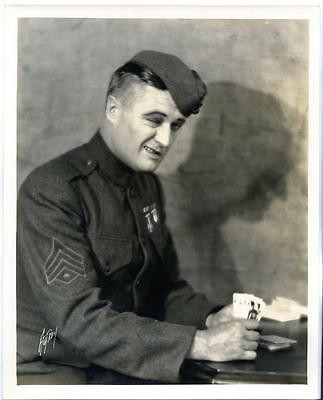 What Price Glory? (1926) What Price Glory? (1926)
“I saw . . . What Price Glory which is in my opinion the nearest thing to a masterpiece ever filmed . . . Edmund Lowe was great, too.” —Robert E. Howard to Harold Preece, ca. June 1928 Edmund Lowe (March 3, 1890-April 21, 1971) played 1SG Quirt in the movie What Price Glory? Born in San Jose, California, he grew into adulthood not sure what he wanted to do with his life. He thought about the priesthood, decided to go to college and thought about law, then teaching, and finally, a professional career in vaudeville. He was only that for a short time before he found his way onto the Broadway stage. In 1915, he appeared in his first silent picture, and by the early 1920s, was appearing as the main co-star. Finally, with Silent Command (1923), he was in the lead role. He generally played in more of the upperclass, sophisticated, dandy roles, wearing suits or a tuxedo, such as East of Suez (1925). 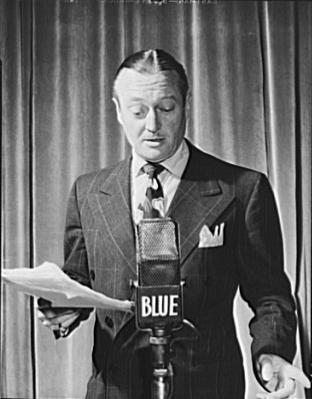 So, when he was picked up for What Price Glory? (1926) he was playing against type for the film by playing the brash, loud, and profane Sergeant Harry Quirt. Audiences already loved him, but with this film, he became a much sought after star for the rest of his career, though decidedly this remained his most popular role. He continued making films and handily made the transition to talkies. He appeared in such films as The Spider (1931) and The Cisco Kid (1931), playing the tough guy roles, while he also made films that were more in the lines of romantic comedies, such as I Love You Again (1940) and Double Date (1941). One of his last films was the not so good adaption of the Louis L'Amour novel, Heller with a Gun, which was horribly retitled, Heller in Pink Tights (1960).  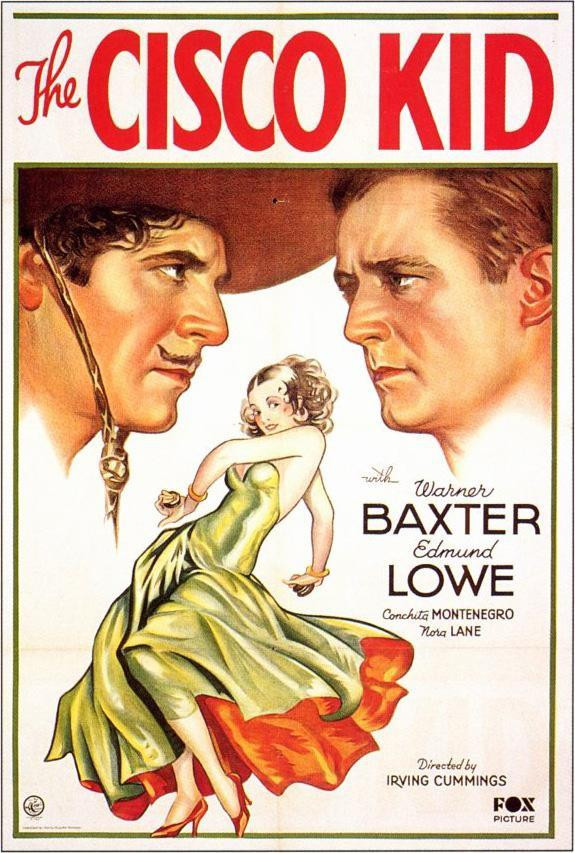 He also appeared often in television in the 1950s and early 1960s. Recently, watching the first episode of the t.v. show Maverick starring James Garner, guess who showed up in the episode? Edmund Lowe made an appearance. |
|
|
|
Post by johnnypt on Apr 14, 2021 14:17:49 GMT -5
Lowe and McLaglen also cameoed together in Around the World in 80 Days.
|
|
|
|
Post by linefacedscrivener on Apr 15, 2021 15:42:29 GMT -5
 What Price Glory? (1926) What Price Glory? (1926)
“I saw . . . What Price Glory which is in my opinion the nearest thing to a masterpiece ever filmed . . . I give the laurel to Victor, too. I think he had more chance to show his stuff, of course; still, I like his type, boy, I sure like his type.” —Robert E. Howard to Harold Preece, ca. June 1928 Victor McLaglen (December 10, 1886 - November 7, 1959), the actor that Howard raved about, played Captain Flagg in the film What Price Glory? (1926). McLaglen was a native of England, though of Scottish ancestry, and was born to a father who was a Protestant missionary. At the ripe old age of 14, he joined the British Army hoping to fight in the Second Boer War, but was sidelined from war and given guard duty at Windsor Castle. He grew during those years into an opposing figure and at the end of his service, moved to Canada, where he earned his living boxing. In 1907, he served as a police constable. He actually fought the Heavyweight Champion Jack Johnson in 1909, but it was only an exhibition bout. He returned to Britain in 1913 and signed back up for service during the First World War, thought this time he served as an officer, an acting captain. He continued to box, but lost in a knockout in October 1920, and decided to hang that profession up. His final record: 16 wins, 8 losses, 1 draw. That same year, while relaxing at a sporting club, a film producer who, needing someone to play a boxer, hired McLaglen for the leading role. It made sense, for sure, but after that experience, he never looked back. McLaglen nearly always played the strong, adventuresome Howard-type, which is no doubt why Howard had so much respect for him. He made film after film, including one co-written by Alfred Hitchcock in those early English film days, T he Passionate Adventure (1924). He moved to Hollywood in 1925 and appeared with Lon Chaney, Sr. in The Unholy Three (1925) and in one movie directed by Frank Lloyd, Winds of Chance (1925), and another by John Ford, The Fighting Heart (1925). He was a natural for What Price Glory? (1926) and that film minted him a star. One of Howard’s favorite novels by Talbot Mundy, King of the Khyber Rifles, was retitled The Black Watch for the 1929 film, and McLaglen was cast in the lead role playing Captain Donald Gordon King. If you ever watch that movie, pay close attention and you should be able to spot a very young John Wayne who was uncredited in the film. McLaglen later appeared in a number of John Ford/John Wayne films, seven in total. Among these were Fort Apache (1948), She Wore a Yellow Ribbon (1949), Rio Grande (1950), and The Quiet Man (1952). Recently, while my wife and I were watching an episode of Rawhide called “The Shambling Man,” an older Victor McLaglen appeared in the episode; it turns out that was his last performance on screen. 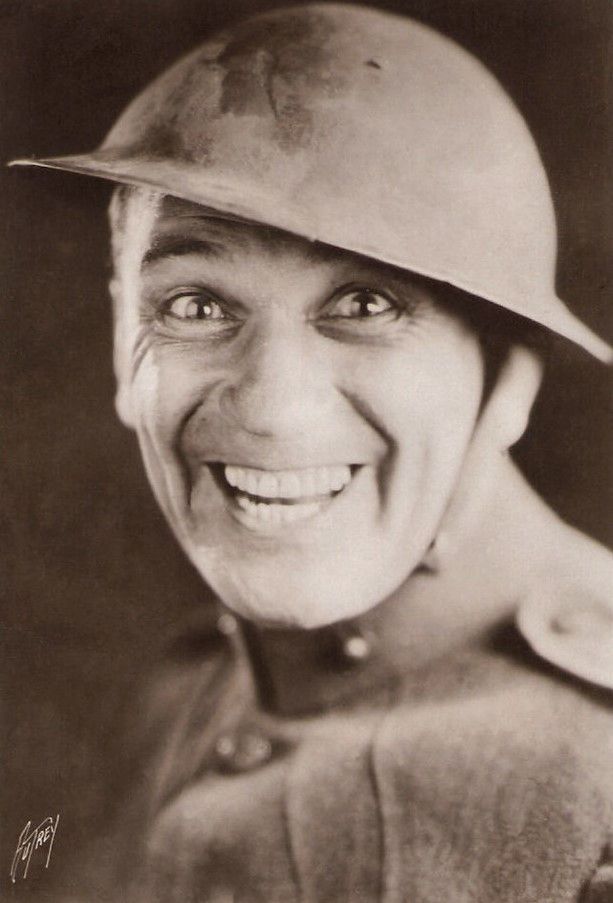 |
|
|
|
Post by johnnypt on Apr 16, 2021 9:17:20 GMT -5
His son was director Andrew McLaglen who made a career of doing tough and gritty westerns, war films...and Mitchell. Howard probably would've liked a bunch of his films, but may not have known what to make of Joe Don Baker (might have liked him in Walking Tall).
|
|
|
|
Post by linefacedscrivener on Apr 17, 2021 6:54:01 GMT -5
His son was director Andrew McLaglen who made a career of doing tough and gritty westerns, war films...and Mitchell. Howard probably would've liked a bunch of his films, but may not have known what to make of Joe Don Baker (might have liked him in Walking Tall). I did not know that, though several times I wondered about seeing the name Andrew McLaglen when watching my favorite t.v. show, Rawhide. His name came up several times in the opening credits as director. I always wondered if he was related, but was too lazy to either write a note and check later or pause the show and go check. By the time the credits roll, playing that most awesome opening song, all I want to do is watch some cows. |
|
|
|
Post by linefacedscrivener on Apr 19, 2021 15:21:39 GMT -5
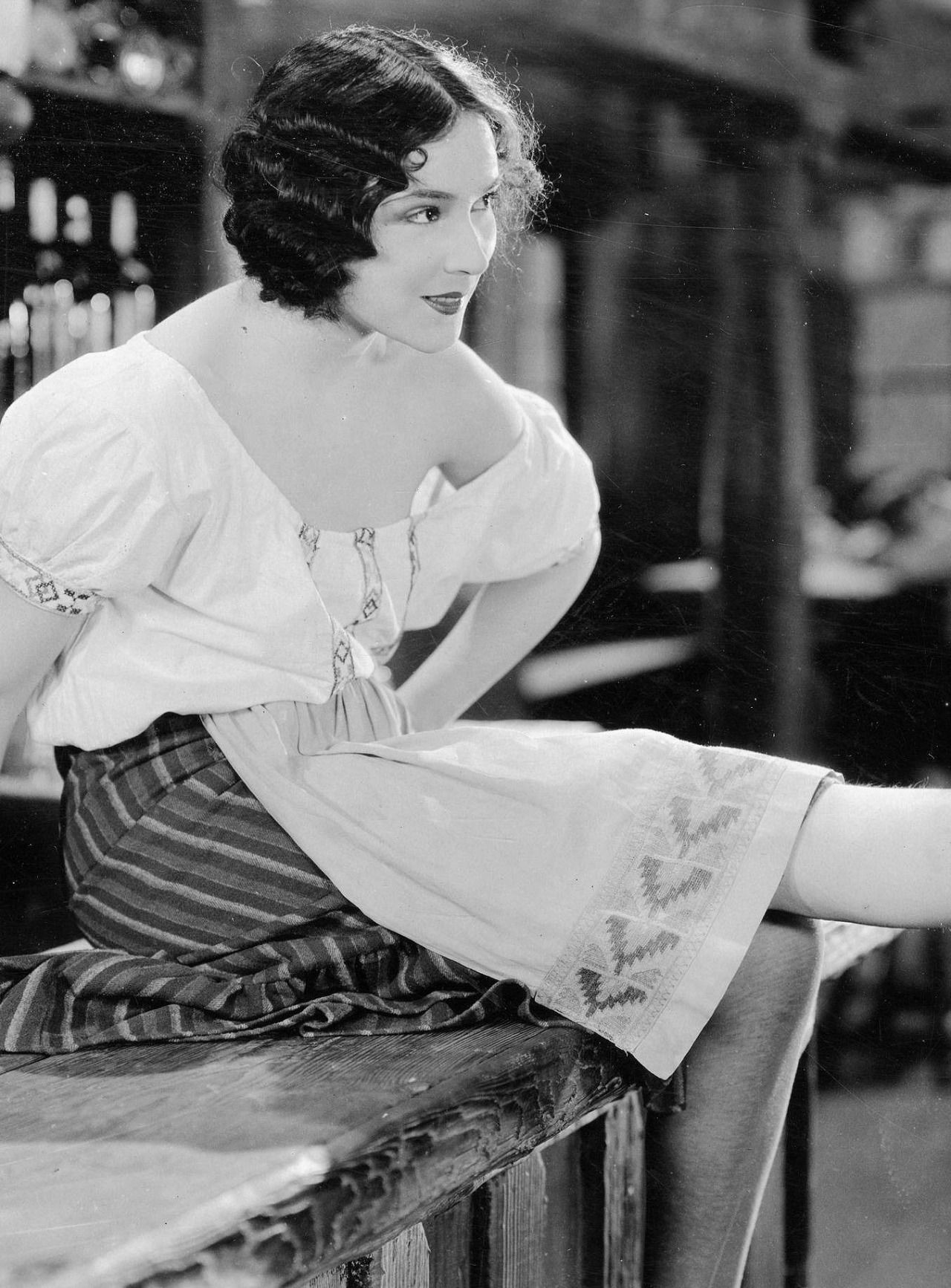 What Price Glory? (1926) What Price Glory? (1926)
“I saw . . . What Price Glory which is in my opinion the nearest thing to a masterpiece ever filmed.” —Robert E. Howard to Harold Preece, ca. June 1928 Dolores del Rio (August 3, 1904 - April 11, 1983) plays the character Charmaine de la Cognac in the film. Dolores was actually born in Mexico with the really long name: María de los Dolores Asúnsolo y López-Negrete. Needless to say, Hollywood shortened it for her. She appeared in a number of silent films, but it was this movie that made her famous. When the talkies came, she crossed over proving to still be successful. She caught some controversy for swimming in the nude in the pre-code film Bird of Paradise (1932), not to mention dancing, suggestively, topless, but the code came along and things like that would be another forty years away. Over the years, she was forced to reinvent herself numerous times, as her personal life kept getting in the way. She left Hollywood during World War II and made films in Mexico, then returned to television in the 1960s and eventually went back to Hollywood. Over her career, she danced with Fred Astaire in Flying Down to Rio (1933) (no sexual innuendo there) and played opposite Elvis Presley in Flaming Star (1960). 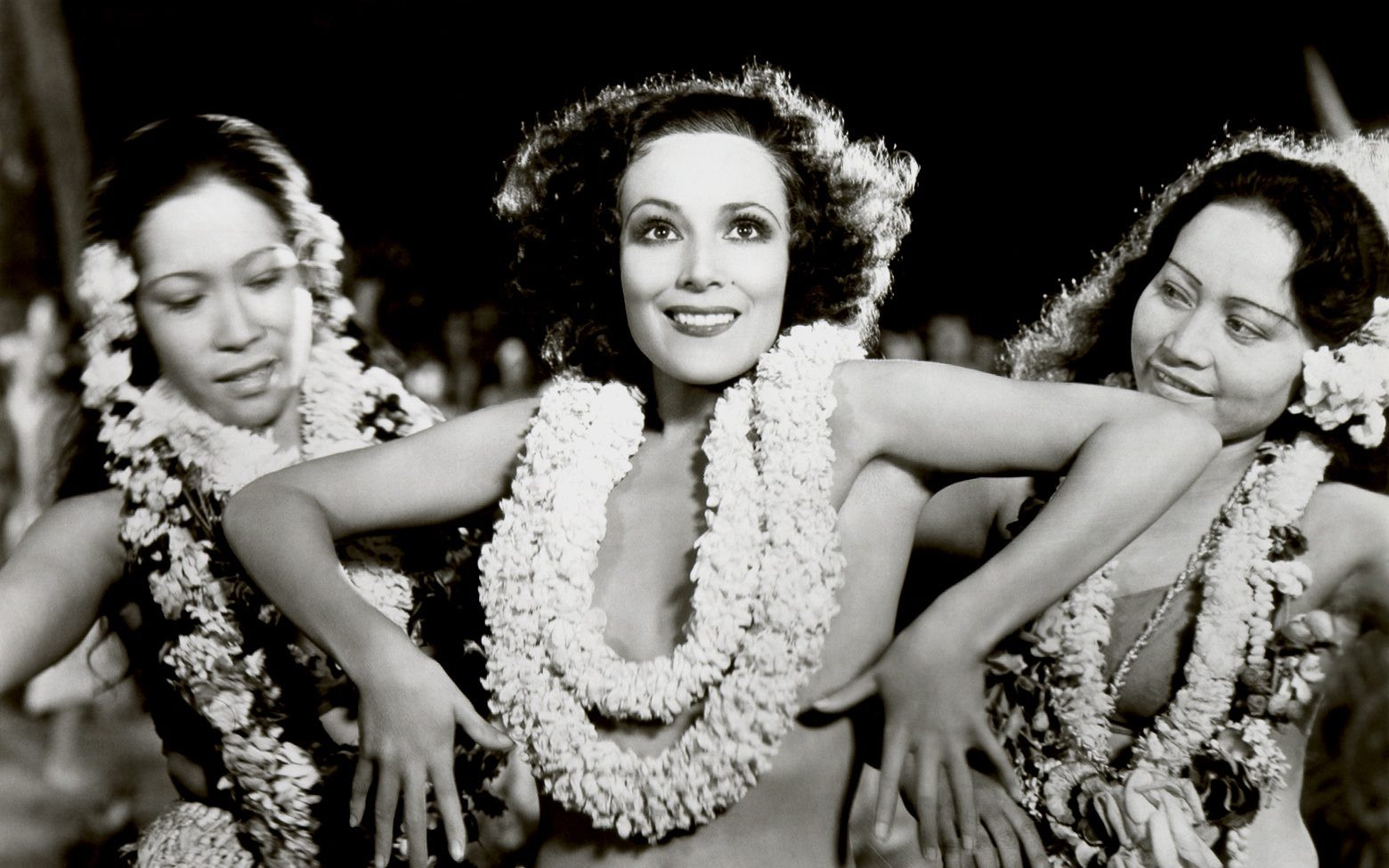 |
|
|
|
Post by Char-Vell on Apr 19, 2021 15:33:48 GMT -5
" She caught some controversy for swimming in the nude in the pre-code film Bird of Paradise (1932), not to mention dancing, suggestively, topless,"
sounds like a fine motion picture!
|
|
|
|
Post by johnnypt on Apr 20, 2021 7:04:32 GMT -5
" She caught some controversy for swimming in the nude in the pre-code film Bird of Paradise (1932), not to mention dancing, suggestively, topless," sounds like a fine motion picture! Quite a long way from playing Elvis's mother and later the Spanish widow in Cheyenne Autumn. |
|
|
|
Post by linefacedscrivener on Apr 20, 2021 13:52:14 GMT -5
 What Price Glory? (1926) What Price Glory? (1926)
“I saw . . . What Price Glory which is in my opinion the nearest thing to a masterpiece ever filmed.” —Robert E. Howard to Harold Preece, ca. June 1928 The film Robert E. Howard watched, What Price Glory? (1926), proved so popular—earning $2 million at the box office—Hollywood decided to make a sequel (a practice that still goes on today) titled, The Cock-Eyed World (1929). Again, the movie proved popular enough with American audiences that they made a third sequel titled, Women of All Nations (1931). 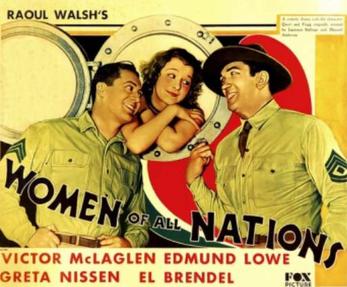 Lowe and McLaglen also reprised their roles in a Laurel & Hardy film that featured numerous Hollywood cameos: The Stolen Jools (1931). 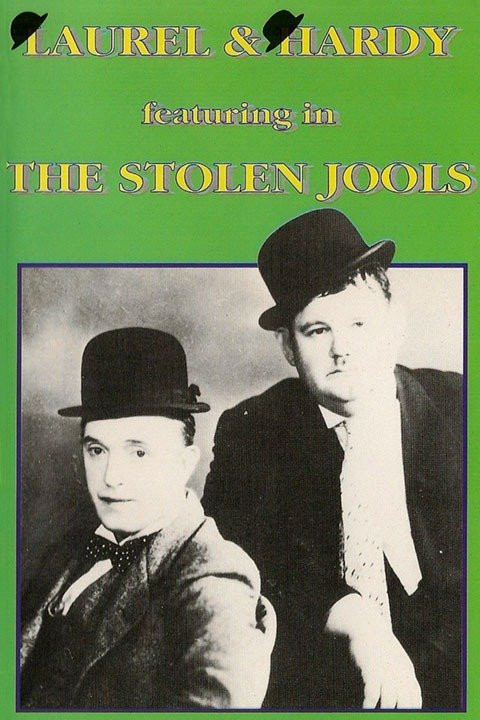 And, finally, Hot Pepper (1933). 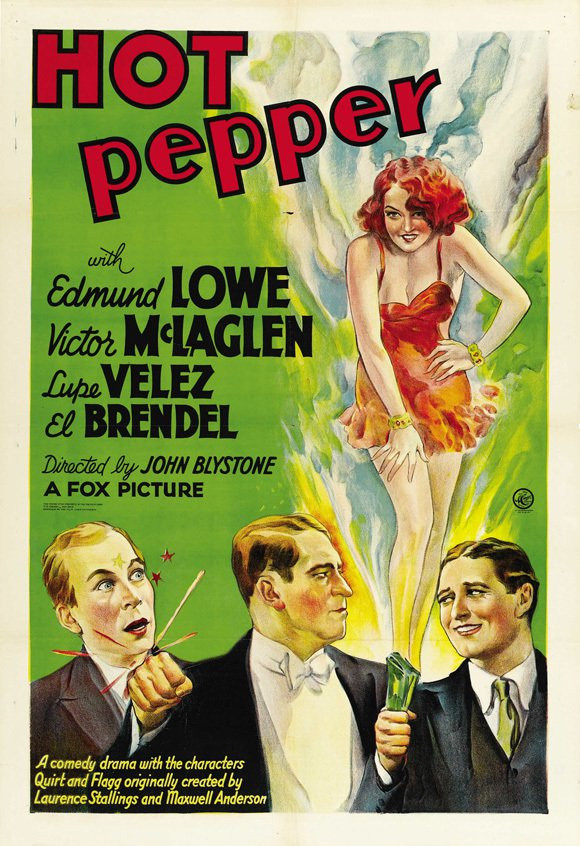 During World War II, the characters were resurrected for radio in a program titled Captain Flagg and Sergeant Quirt, broadcast from September 28, 1941 through January 25, 1942. The two actors again played nearly the same characters opposite each other in Call Out the Marines (1942), but they were cast with different names in this film. 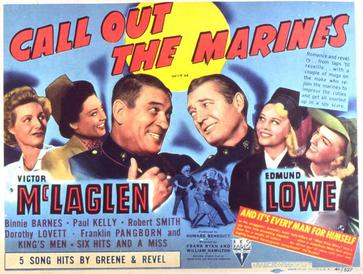 The original film was also remade into the 1952 John Ford film What Price Glory (1952) with James Cagney and Dan Dailey fighting over Corinne Calvert. Although Americans in the 1920s and early 1930s loved the rivalry, the 1952 audience found it rather ho-hum. |
|
|
|
Post by linefacedscrivener on Apr 27, 2021 15:26:49 GMT -5
 The Canyon of Light (1926) The Canyon of Light (1926)
“I saw a Tom Mix thriller with the war mixed in and Barry Norton got killed in it, too; that kid is a glutton for punishment.” —REH to Harold Preece, ca. June 1928 Release Date: December 5, 1926 REH Rating: * * *According to the Turner Classic Movies database, Tom Mix played the character Tom Mills in this movie and it gives the following synopsis: “Tom Mills's buddy, Ricardo Deane [played by Barry Norton], is killed in France during the war, and after the war Tom is invited to visit Deane's family on the Mexican border. There he discovers that Ed Bardin, Deane's brother-in-law, has been unfaithful to his wife, and that he is a bandit, posing as Tom. Following a stage holdup, a runaway rescue, a near hanging, a rodeo, and cliff and river riding, the gang is captured and Tom wins the heart of Concha, his buddy's sister.” The movie also stars Tom Mix’s ever popular horse, “Tony the Wonder Horse.” Tom Mix was the “Cowboy of the Silver Screen” in the silent movie era, appearing in 291 films. He is considered the first movie cowboy and by the 1920s was known as a “Hollywood Mogul.” The film was released on December 5, 1926 by Fox Film Corporation on six reels, making it a 60 minute movie. The film is on the Library of Congress’s National Film Preservation list of lost movies, so no copy is available.  |
|
|
|
Post by bulbous on Apr 28, 2021 9:14:13 GMT -5
Howard liked Delores Del Rio, but he really, REALLY liked Lily Damita, costarring in "The Cock Eyed World" that you mentioned above:
"I saw Lily Damita for the first time yesterday in a show at Cisco — Thornton Wilder’s muck put in movies ["The Bridge of San Luis Rey"]. Dolores Del Rio and Lupe Velez can’t hold a candle to her when it comes to frenzy. Lupe is prettier and Delores is a better all around actor, but my God, this Damita girl is a white hot flame. She dances like a fanflare of sunfire blown before the wind — no, like a burning flame of moon-mist under the stars — Hell — see her for yourself. Some things can’t be described. They have to be seen."(to T.C. Smith, March 1929)
And talking about what he likes in movies, Howard gets to the women:
"Then if they have to have a heroine, throw in some hard baby with a poker face and a heavyweight punch, that can take it on the chin and hand out punishment too: Evelyn Brent; Fay Wray; Lilian Tashman; Florence Vidor; Louise Brook; Baclanova; Lila[sic] Damita — boy, go no further! When that blonde French whirlwind goes into action, all others take a back seat. It’s time to batten down the hatches, reef all sails, and stand by to cut the masts if necessary. Once I saw her — once. The Bridge of San Luis Rey — let me tell you, confidentially, that’s why the bridge fell. Get me. Yes! She walked across and scorched the damned ropes." (to Harold Preece, August 19, 1929)
We don't know if Howard got a chance to see her in "The Cock Eyed World", but I imagine if it played near him he would have gone to see the movie.
|
|
|
|
Post by linefacedscrivener on Apr 28, 2021 13:58:12 GMT -5
Howard liked Delores Del Rio, but he really, REALLY liked Lily Damita, costarring in "The Cock Eyed World" that you mentioned above: "I saw Lily Damita for the first time yesterday in a show at Cisco — Thornton Wilder’s muck put in movies ["The Bridge of San Luis Rey"]. Dolores Del Rio and Lupe Velez can’t hold a candle to her when it comes to frenzy. Lupe is prettier and Delores is a better all around actor, but my God, this Damita girl is a white hot flame. She dances like a fanflare of sunfire blown before the wind — no, like a burning flame of moon-mist under the stars — Hell — see her for yourself. Some things can’t be described. They have to be seen."(to T.C. Smith, March 1929) And talking about what he likes in movies, Howard gets to the women: "Then if they have to have a heroine, throw in some hard baby with a poker face and a heavyweight punch, that can take it on the chin and hand out punishment too: Evelyn Brent; Fay Wray; Lilian Tashman; Florence Vidor; Louise Brook; Baclanova; Lila[sic] Damita — boy, go no further! When that blonde French whirlwind goes into action, all others take a back seat. It’s time to batten down the hatches, reef all sails, and stand by to cut the masts if necessary. Once I saw her — once. The Bridge of San Luis Rey — let me tell you, confidentially, that’s why the bridge fell. Get me. Yes! She walked across and scorched the damned ropes." (to Harold Preece, August 19, 1929) We don't know if Howard got a chance to see her in "The Cock Eyed World", but I imagine if it played near him he would have gone to see the movie. Yep! When I provided pictures of Lily Damita for The Bridge of San Luis Rey (1929) entry of "Howard at the Movies" for REHupa, much of the feedback was "Howard sure was right!" Maybe a sneak peek so everyone knows who we're talking about:  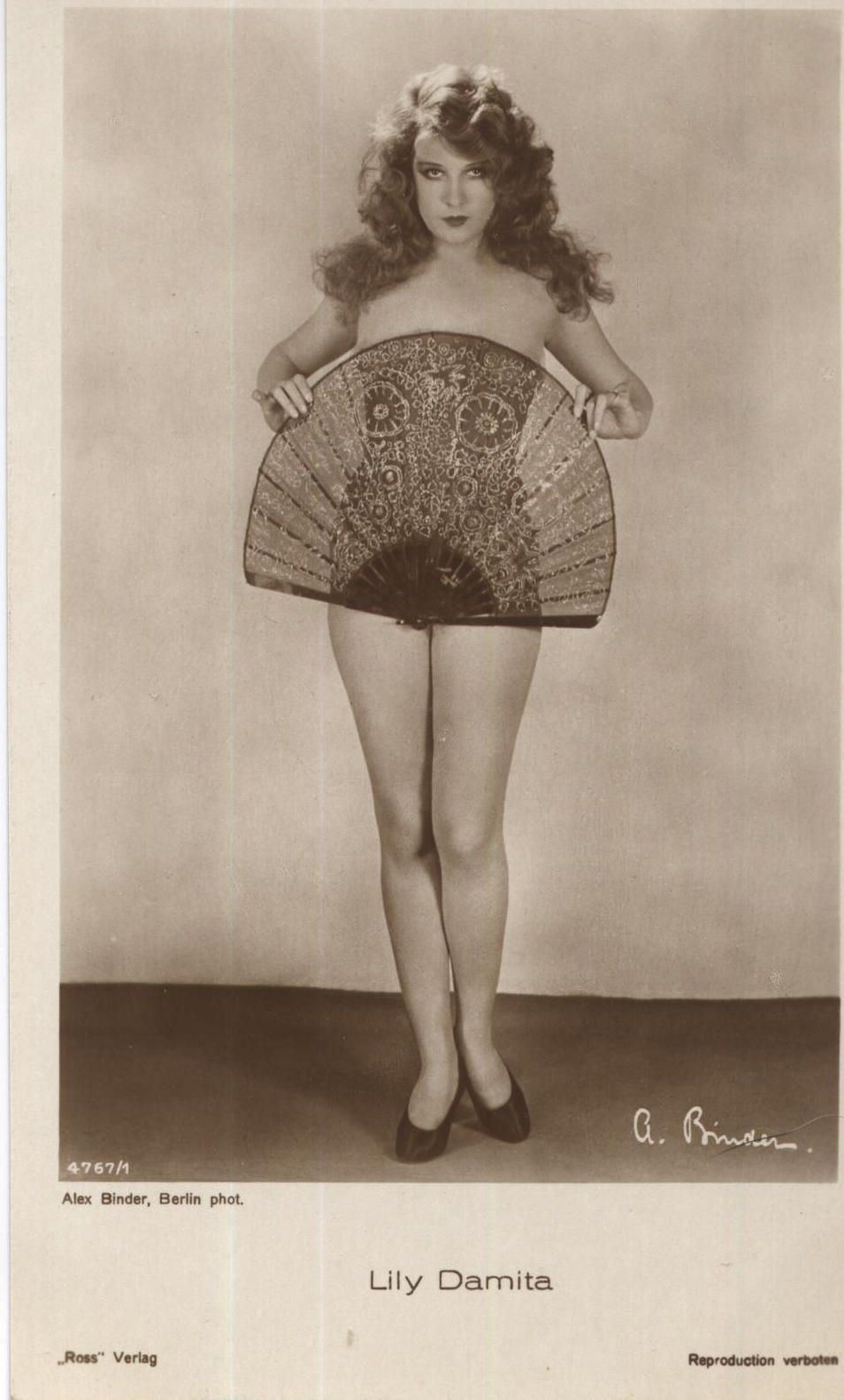 |
|
|
|
Post by linefacedscrivener on Apr 28, 2021 14:25:42 GMT -5
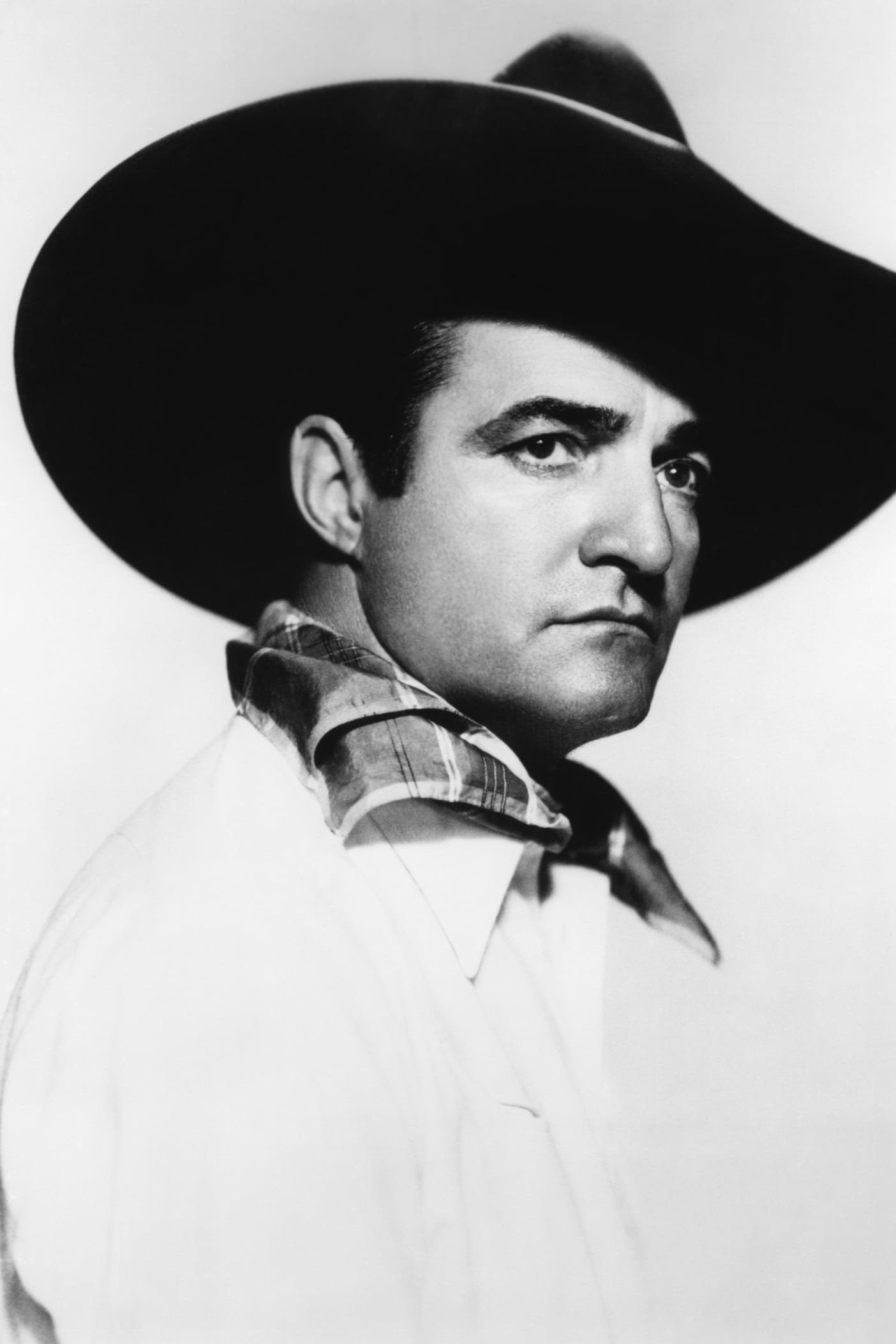 The Canyon of Light (1926) The Canyon of Light (1926)
“I saw a Tom Mix thriller with the war mixed in and Barry Norton got killed in it, too; that kid is a glutton for punishment.” —REH to Harold Preece, ca. June 1928 Tom Mix was born Thomas Hezikiah Mix on January 6, 1880 in Mix Run, Pennsylvania. He grew up in Dubois and wanted to join the circus from an early age. Instead, when war broke out with Spain, he joined the U.S. Army serving stateside. After meeting a young lady in 1902, he ran off to marry her and never returned to the military, although he was never court-martialed for his desertion. The marriage did not work out so well, nor did the next one, so Mix ended up in Guthrie, Oklahoma. It was there that he finally realized his dream of joining the circus when he became part of the Miller Brothers 101 Ranch. Not only was it a traveling western shown, it was actually a real working ranch where he was able to perfect his roping and riding skills over the next several years. About this time, films were just gaining a footing, and Mix appeared in a couple, leading him to pursue his movie career. By all counts, by the time he made The Canyon of Light (1926), he had appeared in well over 100 movies. After the talkies came, Mix’s career in the movies came to a slow end, though he continued to do circus and western shows, before finding a more comfortable and lucrative career in radio, appearing on the ever popular Tom Mix Ralston Straight Shooters show, sponsored by Ralston Purina. Unfortunately, on October 12, 1940, while driving through Florence, Arizona, he was involved in a horrible motor vehicle crash and died; he was 60 years old.  Side note: Growing up, I was a big fan of the old cinema cowboys. My favorite was always Gene Autry, but I also liked Tom Mix, Roy Rogers, and the Lone Ranger. About ten years ago, I became interested in revisiting my old favorite cowboy stars, so I watched some of their movies and read their biographies. One excellent biography on Tom Mix was written by a relative of his, Paul E. Mix, titled Tom Mix: A Heavily Illustrated Biography of the Western Star, with a Filmography (McFarland & Co., Inc., 1995). If you have an interest in Tom Mix, this is an excellent place to start. |
|
|
|
Post by Char-Vell on Apr 28, 2021 15:10:28 GMT -5
Howard liked Delores Del Rio, but he really, REALLY liked Lily Damita, costarring in "The Cock Eyed World" that you mentioned above: "I saw Lily Damita for the first time yesterday in a show at Cisco — Thornton Wilder’s muck put in movies ["The Bridge of San Luis Rey"]. Dolores Del Rio and Lupe Velez can’t hold a candle to her when it comes to frenzy. Lupe is prettier and Delores is a better all around actor, but my God, this Damita girl is a white hot flame. She dances like a fanflare of sunfire blown before the wind — no, like a burning flame of moon-mist under the stars — Hell — see her for yourself. Some things can’t be described. They have to be seen."(to T.C. Smith, March 1929) And talking about what he likes in movies, Howard gets to the women: "Then if they have to have a heroine, throw in some hard baby with a poker face and a heavyweight punch, that can take it on the chin and hand out punishment too: Evelyn Brent; Fay Wray; Lilian Tashman; Florence Vidor; Louise Brook; Baclanova; Lila[sic] Damita — boy, go no further! When that blonde French whirlwind goes into action, all others take a back seat. It’s time to batten down the hatches, reef all sails, and stand by to cut the masts if necessary. Once I saw her — once. The Bridge of San Luis Rey — let me tell you, confidentially, that’s why the bridge fell. Get me. Yes! She walked across and scorched the damned ropes." (to Harold Preece, August 19, 1929) We don't know if Howard got a chance to see her in "The Cock Eyed World", but I imagine if it played near him he would have gone to see the movie. Yep! When I provided pictures of Lily Damita for The Bridge of San Luis Rey (1929) entry of "Howard at the Movies" for REHupa, much of the feedback was "Howard sure was right!" Maybe a sneak peek so everyone knows who we're talking about:   sweet christmas! |
|